This blog post was originally published in 2016. John Burningham (1936-2019) lived in Hampstead, north London, and I was fortunate to interview him for London Transport Museum in 2010. On my several visits to his his lovely home next to the Heath, he was always a most generous and engaging host. His work continues to delight children and adults of all ages.

Now acclaimed as one of Britain’s favourite children’s authors and illustrators, John Burningham’s distinctive graphic style made its public debut on the poster hoardings of London Transport (LT) in the early '60s. A recent graduate of the Central School of Arts and Crafts, Burningham’s emerging talent was spotted by LT’s Head of Publicity, Harold Hutchinson, who had a reputation for commissioning promising young artists alongside more established names like Abram Games and Tom Eckersley.
Burningham’s first design, Please Avoid the Rush Hours, was published in 1961 as a ‘panel poster’ for display above the seats in tube carriages and on buses. Then, as now, overcrowding at peak times was a major problem. LT had previously tried to encourage businesses to introduce staggered working hours to ease congestion, but with little effect. This poster, based on an original lino-cut, was aimed at those who didn’t need to travel at specific times, such as shoppers and tourists. It was a theme that Burningham returned to in 1962 with a second panel poster. Both were printed by John Swain and Company in a run of 15,000 each.
His first full-size poster came out in autumn 1961 as part of a campaign to encourage Londoners to explore the capital’s parks by bus or tube. The original design was a collage of cut out shapes and real leaves, which gave the finished poster a three-dimensional effect. It was printed in the standard double royal format (25” x 40”) for display at tube stations and bus shelters in an edition of 2,700 - considerably more than the pre-war norm of 1,500, which meant it stood a high change of being seen by the millions of commuters using the system every day. Burningham, though, was disappointed with the public’s initial response:
The day the poster was to appear, I got up early and went on a local tour. I thought people would be discussing my poster but their reaction seemed to be to ignore or to lean against it.
Hutchinson, however, was clearly pleased with the result and commissioned a follow up poster promoting trips to London Zoo, for which Burningham was paid the going rate of £52 10s. The subsequent design featured a photographed model of Noah’s Ark made by Burningham, complete with plasticine animals set on a tissue paper sea, in a forerunner of the process he later used to illustrate the Chitty-Chitty-Bang-Bang story (1964).
More commissions followed, including a design for LT’s Country Walks booklet (1962) featuring early versions of characters that were to reappear in different guises throughout Burningham’s later children’s books, such as the distinctive sleepy looking cow, stiff necked goose and inquisitive sausage dog with upright tail.
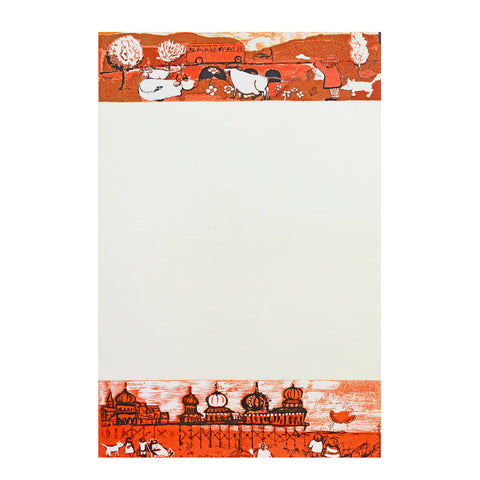
The prestige associated with working for London Transport resulted in a spate of related commissions from the British Transport Commission on behalf of its subsidiary coach operators. Several of these designs (including the example above) were printed as ‘stock’ posters with a blank area left for excursion details to be added later. Others promoted private coach hire, although my favourite is a 1962 panel poster (below) asking passengers if they have ‘left anything behind’ such as their umbrella, hat, parrot or baby!
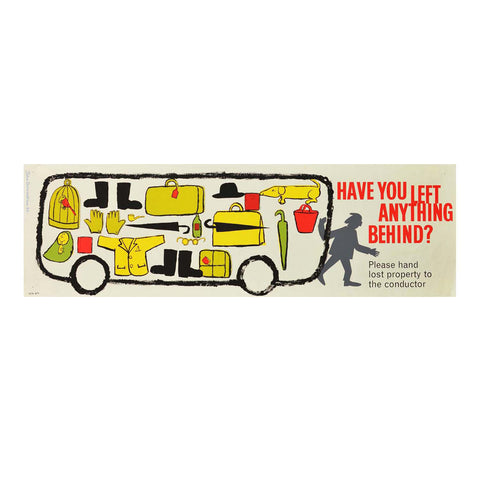
Burnigham’s posters were very well received at the time, and regularly reviewed in the graphic design journals International Poster Annual, Gebrauchsgraphick de, Modern Publicity and Graphis de. But by the mid-1960s the success of Borka: The Adventures of a Goose with No Feathers, Humbert, Chitty-Chitty-Bang-Bang and other illustrated stories had taken Burningham’s career in a new direction. LT made one last attempt to persuade John to produce a new design in 1966 for a poster entitled Children’s London. Much delayed due to other commitments, the commission was eventually dropped in 1970 when Burningham embarked on his epic 80-day journey around the world to gather material for a book celebrating the centenary of Jules Verne’s classic novel. Yet the story didn’t end there. In 2011 John was persuaded to re-visit the commission by staff at London Transport Museum, and the finished work (below) was finally posted on the system 45 years after the design was first mooted.

Nowadays original posters by John Burnigham are hard to find, even though some were sold through LT’s Marylebone outlet shop at the time. More elusive still are the original artworks, almost none of which appear to have survived, an exception being the two-piece gouache and card illustration (below) for his 1961 seaside excursion poster.

The best publicly owned collection of posters by John Burnigham is held by the superb London Transport Museum and can be viewed online here. If you would like to know more about John’s life and work, please see the bibliography for related titles, especially John Burningham published by Jonathan Cape (London, 2009).
A selection of original posters for sale by John Burningham can be viewed here.
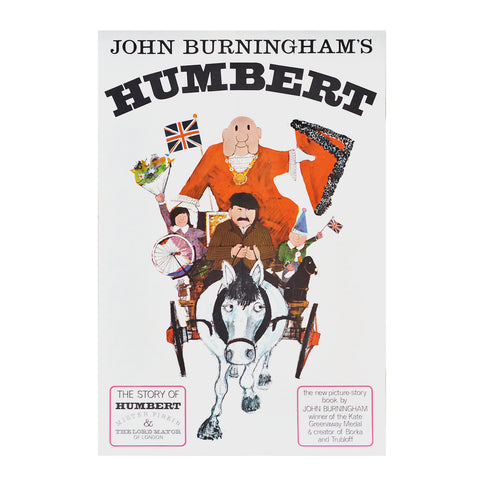
In putting this blog together, I am indebted to London Transport Museum for kindly allowing me to use original posters from the TfL archive. The text is an abridged version of my introduction to John Burnigham, An Illustrated Journey (The Fleming Collection, 2011)
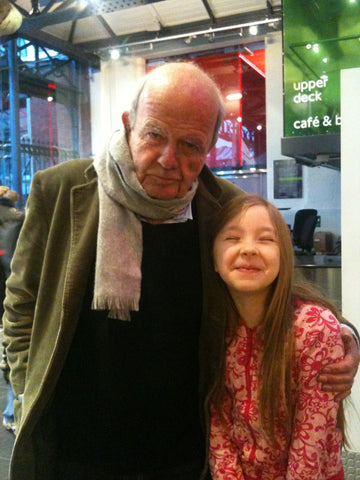

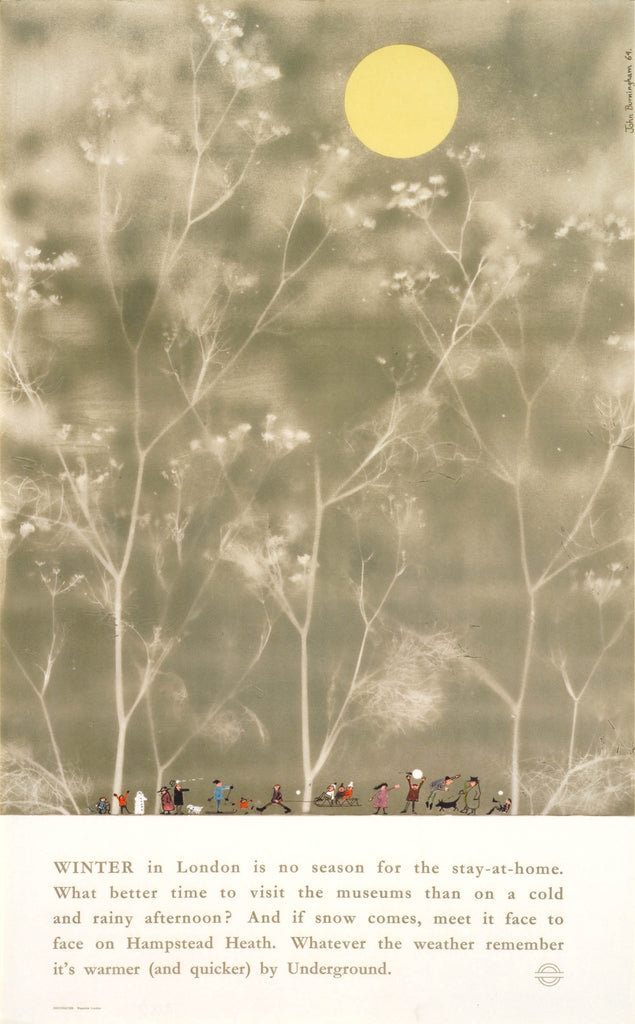

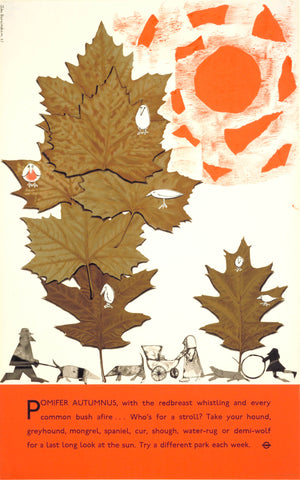
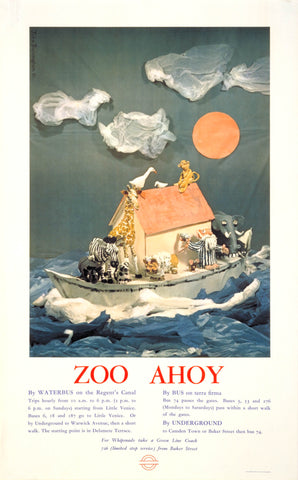
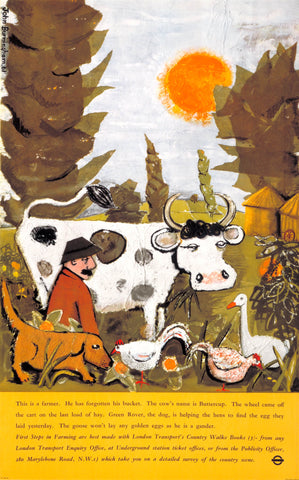

Comments on post (1)
L. K. Jordan says:
I very much appreciate the information and pictures shared here! Thank you!
I have been a fan since I first read Cannonball Simp.
Leave a comment